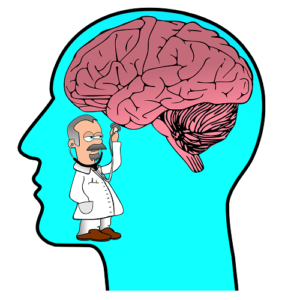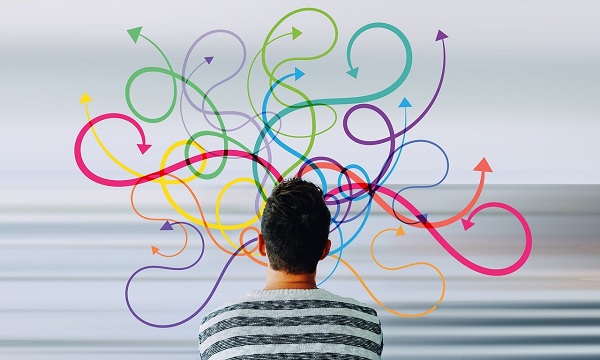Now You Can Gauge Your Meditation – Brainwave Monitoring Devices
I received an email recently from one of my readers inquiring about methods to monitor mental activity. This prompted me to create a post on brainwave monitoring devices. Having personally tried a few of these gadgets, I can attest to the fact that current technology allows us to closely track our brain states, particularly during meditation sessions. This enables us to gauge the effectiveness of our meditation practices.
I recall a time when I used to read about costly devices capable of measuring the level of mental activity, whether one’s mind was busy or relaxed. Being deeply interested in spiritual pursuits, I often wished for a tool like this to assess the efficacy of my meditation and relaxation techniques.
This is a common concern among individuals engaged in meditation or mindfulness practices: the need to ascertain if they are following the correct approach. Traditionally, there has been a singular method to gauge the effectiveness of one’s meditation: ensuring that the number of thoughts during the practice is fewer than what one typically experiences in everyday life. It’s a straightforward criterion for evaluation.
Nevertheless, a challenge arises from the heightened state of awareness during meditation. In this heightened state, individuals become conscious enough to observe the frequency at which thoughts arise. Paradoxically, it may seem as though the “monkey mind” is even more active during meditation, primarily because one is not typically aware of how restless the mind can be in everyday circumstances. Due to this reason, people start to get discouraged that they are not meditating properly or they begin to think that meditation is working counterproductively for them.
Achieving the ability to distinguish between moments of fewer thoughts and heightened mental activity requires considerable time and practice. However, as mentioned earlier, we now have access to devices capable of monitoring our brainwaves. This means that even those who have never practiced meditation before can ensure they are on the right track.
The exciting news is that there are now affordable products readily available online for this purpose. I’ll provide a product recommendation later. First, let’s delve into what brainwaves are and how we can monitor our mental activity using instruments that detect the electrical signals emanating from our brains.
Brainwaves – Electrical Pulses
Among the world’s most profound enigmas lies the human capacity for thought. Today, we possess the means to measure the frequency at which our thoughts are occurring. It’s quite astonishing, isn’t it? However, it’s important to recognize that this development doesn’t diminish the enduring mystery of the human mind.
Conducting some research into how modern gadgets can gauge the intensity of our mental activity provided me with a revealing insight. It becomes evident that we can now determine whether a person’s mind is immersed in thoughts or in a state of calm.
You might already know that neurons in our brain communicate with each other through electrical pulses(action potential). When there is electrical activity caused by groups of neurons, it results in rhythmic patterns of electrical pulses that are known as brainwaves and can now be measured. Clinically, doctors use the EEG (Electroencephalography) technique for measuring brainwaves, mainly for diagnosing various neurological conditions.
Brainwaves exhibit varying frequencies, aligning with diverse mental states, and are classified into specific categories like alpha, beta, theta, and gamma states. These states intricately shape our conscious experiences. The beta state corresponds to heightened wakefulness, while the alpha state signifies relaxation. In contrast, the theta state mirrors the phase of light dreaming sleep. At the lowest end of the spectrum, gamma-level frequency emerges during deep sleep, representing the profound restorative stage of slumber.
Within the spectrum of brainwave states, the alpha and theta levels have gained significant popularity. They serve as the focal points for widely embraced personal development programs like the Silva UltraMind System. These states are considered ideal for various practices, including meditation, self-hypnosis, visualization, and many other self-improvement techniques. Since our mind is highly relaxed during both alpha and theta states, it becomes easier to communicate an idea/thought to our subconscious mind, enhancing the efficacy of these methods. This accessibility to the deeper realms of consciousness is why these states have become pivotal tools in the pursuit of personal growth and transformation.
All the buzz you might have heard about binaural beats these days for altering a person’s brainwaves is indeed based on this phenomenon. Although I have some reservations about binaural beats, I decided to try these devices to assess the effectiveness of brainwave entrainment tracks.
A brainwave monitoring device functions by detecting these brainwaves from our scalps and providing a statistical report of our mind’s activity. Unlike EEG, these devices use a non-invasive methodology by incorporating detectors for this purpose.
My Favorite Brainwave Monitoring Device
As I previously discussed, my initial exploration of brainwave monitoring devices left me with a negative impression of these gadgets, primarily due to their high costs and poor accuracy. However, my unwavering quest for a viable solution ultimately led me to the Muse brand, which, despite its affordability, initially struggled with precision in this field. Thankfully, Muse has since made significant advancements in the field of brainwave monitoring, resulting in the creation of exceptional headbands, notably the Muse 2 and Muse S.
These cutting-edge devices not only boast remarkable accuracy but also come equipped with an ever-evolving companion application. While the latest Muse S (Gen 2) may be a bit too costly from their previous headbands, it has taken me by surprise with its array of incredible features. One standout feature is its advanced sleep monitoring capability, analyzing gamma brainwave readings to provide precise insights into one’s sleep patterns. Additionally, the application offers a unique “digital sleeping pill” feature, using soothing sounds and guided audio to facilitate peaceful slumber. What sets it apart is its ability to detect disturbances in your sleep and automatically resume the sleep aid process, ensuring uninterrupted rest.
The inclusion of this remarkable sleep aid feature was too impressive not to mention. However, for those interested in monitoring their brainwave states during meditation or relaxation routines, both Muse 2 and Muse S prove equally effective. You can confidently choose between these two devices based on your personal preferences.
These products undoubtedly leave a lasting impression, especially for individuals who share my enthusiasm for tools that assist in monitoring and enhancing mental well-being and spiritual growth. If, like me, you’re on a quest to ensure you’re nurturing your mental health and spiritual progress, these Muse headbands make a valuable addition to your collection.
However, it’s also true that such devices aren’t absolutely necessary. Those who engage in regular meditation naturally become more conscious of their mental states over time. I believe that such tools can be helpful initially, or they can serve as motivation. However, the ultimate effectiveness of meditation depends on practice and persistence. It’s akin to using a smartwatch to monitor your workouts – it can provide data and insights, but the actual weight loss or fitness gains depend on your dedicated efforts. Similarly, a brainwave monitoring device can offer valuable statistics and even meditation exercises, but your spiritual growth relies primarily on your consistent commitment and practice.
I hope you found this post enjoyable and informative. If you have any thoughts to share on this subject or your experiences with brainwave monitoring devices, please feel free to leave your comments in the box below. Your valuable feedback and opinions are highly appreciated and serve as motivation for me to create more content like this.
You can reach out via the contact page, and I’ll be more than happy to assist you with any of your issues.
If you found this post helpful, please consider sharing it on your social networks to help spread the word.
